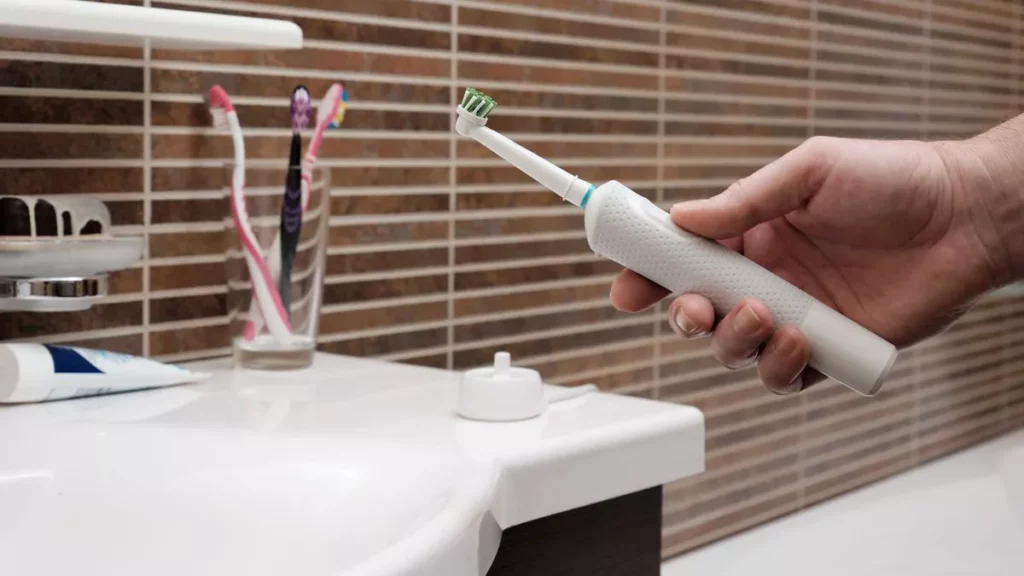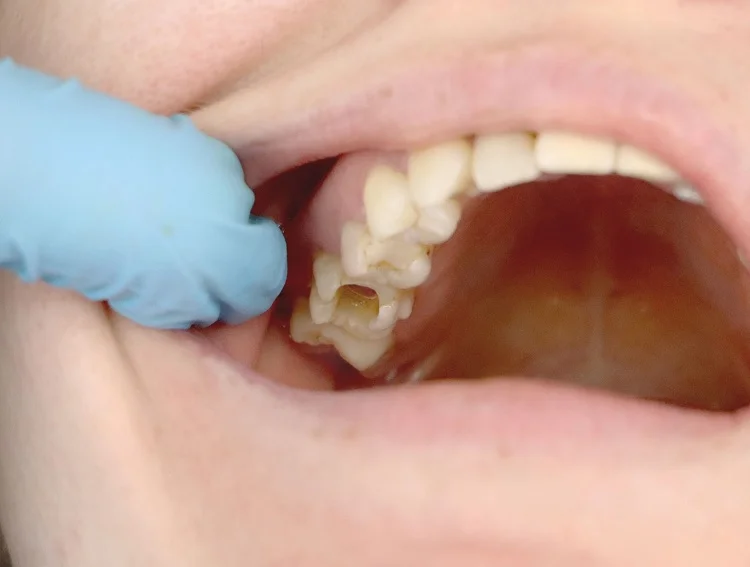Last Updated on: 19th September 2025, 12:29 pm
Dental financing is a way to pay for dental treatments over time by making small monthly installments instead of one large payment. This helps people get the dental care they need without incurring a big upfront cost. You will find various types of plans, including payment plans offered by dentists, loans from banks, credit cards, or special financing companies that specialize in healthcare.
August is National Financial Awareness Month, a perfect time to think about how you manage your money, including paying for health care like dental treatments.
Dental care is important for your health and confidence, but it can be expensive. Some treatments, like teeth cleanings, are affordable, while others, like implants, braces, or veneers, can cost thousands of dollars. Because of these high costs, many people delay or avoid care.
Dental financing is a smart solution. It lets you get the dental work you need or want right away, but pay over time. This protects your budget and makes care more accessible.
What is dental financing?
Dental financing is a way to divide the total cost of your dental treatment into smaller, more manageable payments over time. Instead of paying hundreds or thousands of dollars at once, you will make monthly payments that fit your budget.
You can access dental financing in different ways:
- directly through your dentist
- through banks or credit unions
- from companies specializing in healthcare financing, such as CareCredit or Cherry
Why is dental financing important in the U.S.?
In the United States, dental care can be costly, even with insurance. Most plans only cover part of the expenses and often have yearly limits. Treatments like implants, crowns, or orthodontics can cost thousands.
Without financing, many people delay or skip treatment, risking their oral health.
Why choose a dentist who offers payment plans?
Choosing a dentist with dental financing or in-house payment plans can make dental care more accessible for many patients. Instead of paying a large amount all at once, you can spread the cost over time, reducing financial stress and allowing more patients to consider much better treatments.
What are the advantages of dental financing?
- You pay for treatment in small monthly amounts.
- You can start treatment right away without delays.
- Choose a payment schedule that works for your budget.
- You can get better materials and modern treatments.
- Some plans have no interest if you qualify.
- It helps you pay for emergencies without extra stress.
- It’s easier to plan your money and avoid financial problems.
For someone who really needs dental treatment, being able to pay in smaller amounts not only reduces financial stress but also gives the patient peace of mind and confidence to take care of their oral health.
What are the disadvantages of dental financing?
- Some plans have high interest rates, making them more expensive.
- Having many loans can cause debt.
- Credit checks may lower your credit score temporarily.
- Longer payment terms can mean paying more overall.
- Late payments can add fees and hurt your credit score.
These are reasons why some people choose not to use financing. However, if you are responsible with your money and plan well, it can still be a smart and useful way to get the dental care you need.
What types of dental financing options can you choose?
For many, paying for dental care all at once it’s really difficult; many people use dental financing to make treatment easier to afford. There are several ways to do it, each with its own rules, payment times, and requirements. Knowing your options will help you choose what works best for you.
What are in-house payment plans?
Some dental offices let you pay them directly in small monthly amounts with various benefits
- Often interest-free if you pay in a short time.
- Flexible and adjusted to your specific treatment.
- Payments can be set for 3, 6, 12 months, or more.
- Easy to arrange with the dental team.
Best for people who want simple, direct payments to their dentist.
How do third-party dental financing companies work?
Companies like CareCredit, LendingClub, and Sunbit offer loans for dental care.
- You can choose longer payment times.
- Some offer low interest or even 0% interest for a limited time.
- You usually need a credit check to get approved.
Best for bigger treatments that cost more and need extra time to pay.
What is a personal loan for dental care?
You can get a loan from a bank, credit union, or online lender to pay for your treatment. Note the conditions:
- Interest rates and payment times depend on the lender.
- You can use the money for any dental work you need.
Best for people who prefer to handle financing separately from the dental office.
Can you use a regular credit card?
Yes, many people use their own credit cards to pay for dental treatment.
- This works well for quick and flexible payments.
- Some cards give 0% interest for a few months.
- It’s important to pay before interest rates go up.
Best for people who can manage their credit well and pay on time.
What are health or dental credit cards?
These cards are made only for health and dental costs. They:
- often gives interest-free months if you pay on time
- may have special offers just for healthcare
Best for people who want credit benefits for medical and dental expenses.
What are dental discount plans?
These are not loans, but they help you save money. Why?
- You pay a yearly membership fee.
- You get lower prices for many dental services.
- You can still combine them with other payment options.
Best for people who plan to get several treatments in a year.
The best dental financing option depends on your specific needs. You may think about how much interest you will pay, the time you need to pay the amount back, if you will get approved, and the benefits or limits of each option.
What dental procedures often need financing?
Dental financing is often used for treatments that cost more or take several visits to complete. While you can finance smaller treatments, it’s most common for larger and more complex procedures.
Are dental implants covered by financing?
Yes, dental implants replace one or more missing teeth with a permanent solution that looks and works like natural teeth. They are among the most expensive treatments, so financing will make them more affordable.
Can you finance braces or Invisalign?
Yes, orthodontic treatments, like traditional braces or clear aligners such as Invisalign, straighten teeth and fix bite problems. These treatments often last months or years, making payment plans very helpful.
What about veneers and smile makeovers?
Cosmetic treatments like veneers, teeth whitening, and full smile makeovers improve the look of teeth. Because they are often not covered by insurance, financing lets you invest in your appearance with smaller, manageable payments.
Is full mouth reconstruction eligible for financing?
Yes, full mouth reconstruction can include crowns, bridges, dentures, or a mix of treatments to restore function and appearance. These complex procedures can be costly, so financing is often the best way to manage payments.
Can tooth extractions be financed?
Yes, especially complex extractions that require sedation or surgical techniques. Financing helps cover the cost, allowing you to get the care you need without delay.
Can you finance preventive dental care?
While preventive care like checkups, cleanings, and X-rays is usually less expensive, financing can still help if you prefer smaller payments. Those regular preventive visits are the best way to avoid bigger dental bills later.
What about emergency dental care?
Sudden dental problems happen, but many times we don’t have the money to pay for emergencies. Financing allows you to get quick, necessary treatments without financial stress.
How much do common dental procedures cost in the U.S. (2024–2025)?
If you’re planning dental treatment in the United States, it’s important to know the average cost of each procedure so you can budget wisely.
Prices can vary depending on the state, clinic, and whether you have dental insurance.
This updated 2024–2025 guide includes estimated ranges for the most common treatments, based on trusted sources like CareCredit and current market data.
Dental procedure | Average cost range (USD) |
Routine check-up and cleaning | $65 – $200 |
Dental x-rays (full set) | $85 – $250 |
Tooth filling (composite) | $150 – $450 |
Tooth extraction (simple) | $150 – $400 |
Tooth extraction (surgical) | $250 – $700 |
Wisdom tooth removal (per tooth) | $250 – $1,100 |
Root canal (front tooth) | $700 – $1,100 |
Root canal (molar) | $1,000 – $1,800 |
Dental crown (porcelain-fused-to-metal) | $900 – $1,600 |
Dental crown (all-porcelain or ceramic) | $1,000 – $2,500 |
Dental implant (per tooth, without crown) | $2,500 – $5,000 |
Dental implant (with crown) | $3,500 – $6,500 |
Complete dentures (upper or lower) | $1,000 – $3,000 |
Braces (traditional metal) | $3,000 – $7,500 |
Clear aligners (e.g., Invisalign) | $3,500 – $8,500 |
Teeth whitening (in-office) | $300 – $1,200 |
Veneers (per tooth) | $900 – $2,500 |
Gum treatment (scaling & root planing, per quadrant) | $200 – $500 |
Full-mouth reconstruction | $15,000 – $40,000 |
All-on-4 (arch) | $30,000 – $40,000 |
How to understand these numbers?
These prices represent average national ranges before insurance, discounts, or membership plans. The exact cost will depend on:
- Location: Dental care in big cities often costs more.
- Dentist’s expertise: Specialists may charge higher fees.
- Materials used: Premium options (like all-ceramic crowns) cost more.
- Complexity of the case: More difficult treatments usually mean higher costs.
Tip: If you have insurance, check your plan’s coverage and maximum limits. If you don’t, ask your dentist about financing or membership plans to make treatment more affordable.
How to choose the best dental financing for you?
Selecting the right dental financing will help you access the care you need, whether preventive, cosmetic, or major treatments, without financial strain. The key is to compare options carefully before committing.
What should you compare in dental financing?
- Interest rate: Look for 0% plans or the lowest APR possible.
- Approval requirements: Some programs accept lower credit scores, while others require strong credit.
- Monthly payments: Choose an amount that fits your budget without affecting essential expenses.
- Financing term:
- Short-term: Higher payments but less interest.
- Long-term: Lower payments but more interest over time.
- Prepayment penalties: Avoid plans that charge extra for early payoff.
- Provider reputation: Check reviews and confirm experience with dental financing.
If you have dental insurance, combine it with financing to reduce the amount you need to borrow.
How to get the best deal on dental financing?
- Compare offers from multiple lenders or clinics.
- Read the fine print to detect hidden fees or penalties.
- Look for seasonal promotions and special discounts.
- Set your budget before applying.
- Pay on time to avoid extra charges and protect your credit score.
Dental care should be easy to get. By learning about financing, comparing plans, and choosing the right dentist, you can take care of your teeth without hurting your budget. Whether you need veneers, implants, or just a regular cleaning, the right plan can make good dental care affordable and stress-free.
Frequently Asked Questions
Who can use dental financing?
What treatments can be financed?
How do monthly payments work?
Where can I find dentists who offer financing?
Is dental financing available without insurance?
Voice and Search (Q&A)
Can I get dental financing with bad credit?
Some plans accept lower credit scores, but others may need good credit. Check each plan’s rules.
How long does it take to get approved?
Approval can be instant with many plans, or take a few days if a credit check is required.
Is there a minimum treatment cost for financing?
Some plans may require a minimum cost, often a few hundred dollars, but rules vary by provider.
Share
References
1. ADA. (n. d). Patient Financing Options. ADA. https://www.ada.org/resources/practice/practice-management/patient-financing-options
2. British Dental Journal. (2016). The benefits of a payment plan. (2016). BDJ, 220(10), 553. https://doi.org/10.1038/sj.bdj.2016.388
3. Pendleton, M., Moss, M. E., Wu, Q., Tempel, R., Garcia, R., & Al-Dajani, M. (2023). Payment methods and demographics influence patterns of dental service utilization. Journal of Public Health Management and Practice, 29(6), 929–935. https://journals.lww.com/jphmp/fulltext/2023/11000/payment_methods_and_demographics_influence.23.aspx
4. Sivakanesan, M. (2025, June 30). Patient finance in dental care: challenges, eligibility, best financing plans. https://dentistry.co.uk/2025/06/30/patient-finance-in-dental-care-challenges-eligibility-best-financing-plans/
5. Szymańska, J., Koszuta, A., & Rosiak, J. (2014). Type of financing dental care and frequency of dental visits among patients treated with implants. Polish Journal of Public Health, 124(1), 26–28. https://doi.org/10.2478/pjph-2014-0005
-
Dr. Yeidy Carolina Mesa [Author]
DDS Yeidy Carolina Mesa Passionate Dentist | Advocate for Accessible Oral Health Education Graduating from Universidad CES in 2022, I am a dedicated general dentist with a lifelong passion for helping others and making a meaningful impact in the world. My journey into dentistry began at the age of 7, inspired by my own experience with braces and overcoming a fear of the dentist. This personal journey shaped my mission to help patients conquer their own dental anxieties and embrace a healthier,...
View all posts
-
Nayibe Cubillos M. [Medical Reviewer]
Pharmaceutical Chemestry |Pharmaceutical Process Management | Pharmaceutical Care | Pharmaceutical Services Audit | Pharmaceutical Services Process Consulting | Content Project Manager | SEO Knowledge | Content Writer | Leadership | Scrum Master
View all posts
A healthcare writer with a solid background in pharmaceutical chemistry and a thorough understanding of Colombian regulatory processes and comprehensive sector management, she has significant experience coordinating and leading multidisciplina...






















